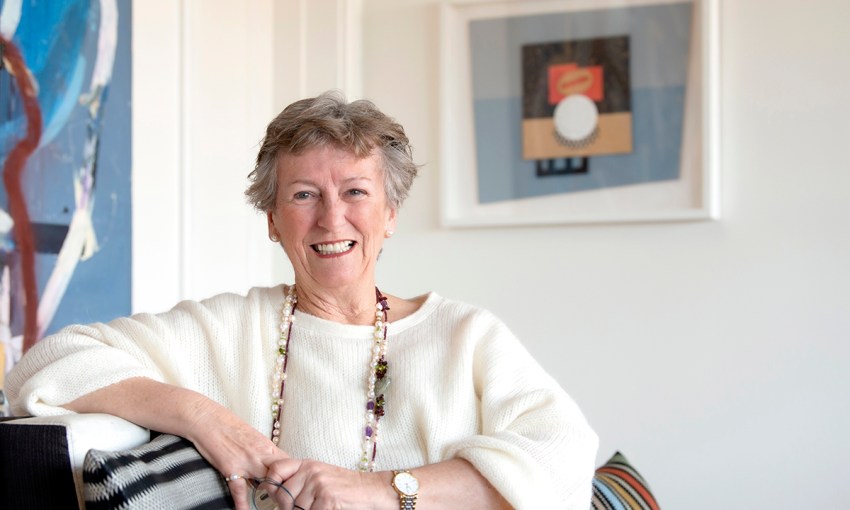Avid collector of contemporary art Diana Laidlaw AM has one main criterion when acquiring new works: they must bring her joy.
The Art of Collecting
When Diana Laidlaw bought her new North Adelaide home 18 months ago, she decided it was time to take stock of the extensive collection of art she had acquired over almost 50 years.
She ended up culling more than 40 artworks, but you wouldn’t know it to step inside her apartment.
Everywhere you look there are treasures to behold — from a shelf in the bedroom lined with beautiful glass works by well-known South Australian artists such as Tom Moore, Clare Belfrage, Nick Mount and Giles Bettison, to a framed drawing by Christopher Orchard in the laundry, and Greg Johns’ organic iron sculptures on the balcony, which offers a panoramic view over Adelaide Oval.
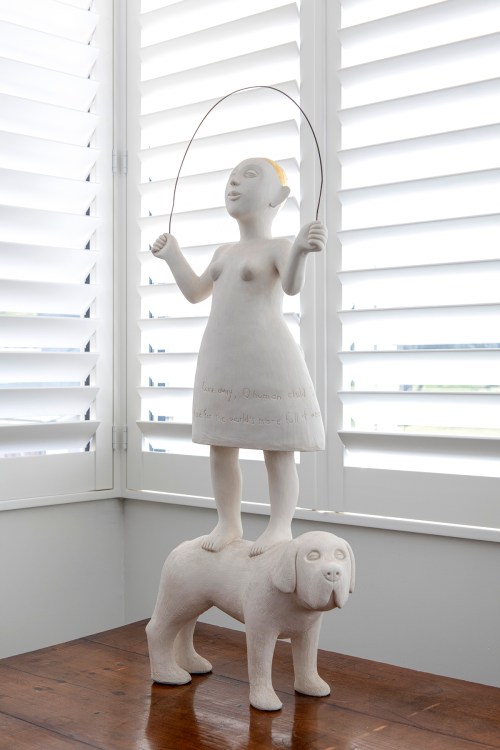
Some of the artworks have been acquired in recent years, including a larrakitj (traditional memorial pole) by Yolngu artist Wukun Wanambi, whose work featured in the 2019 Tarnanthi Festival.
Others — such as a finely detailed Daisy Kemarre Moss painting and a large painting called The Chair by John Beard — have held a place in Diana’s heart and collection for several decades.
“That chair to me is so comforting — I could just snuggle up in it,” she says of the painting, which is a focal point of her living room.
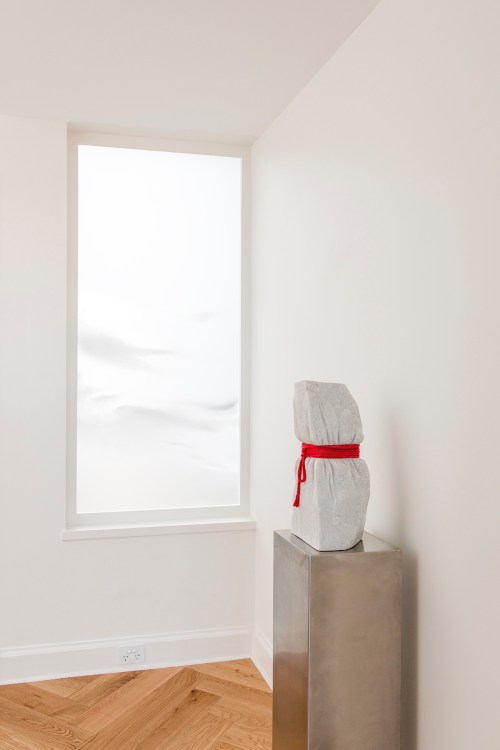
“It’s bold to think you can present something so disjointed but still so comforting, and the colour and the balance just works.”
A former Liberal state politician and member of the South Australian Legislative Council for 21 years, Diana was a strong advocate for both the visual and performing arts while serving as Minister for the Arts from 1993 until 2002. However, her interest was ignited well before then.
Her grandmother passed on a love of decorative arts, such as embroidery and tapestry, while her parents were enthusiastic art collectors and regularly took their three daughters to exhibitions at Kym Bonython’s commercial gallery in North Adelaide’s Jerningham Street.
When the young Diana bought her first home in 1972, there was no way its walls could stay blank. Bold printed fabric from Finnish design house Marimekko was in vogue at the time, so she stapled lengths of it to timber to create makeshift artworks that were later replaced by paintings when she could afford to buy them.
“I bought my first painting in 1973 — it was from Kym Bonython’s and it was by a South Australian artist called Tony Bishop,” she says.
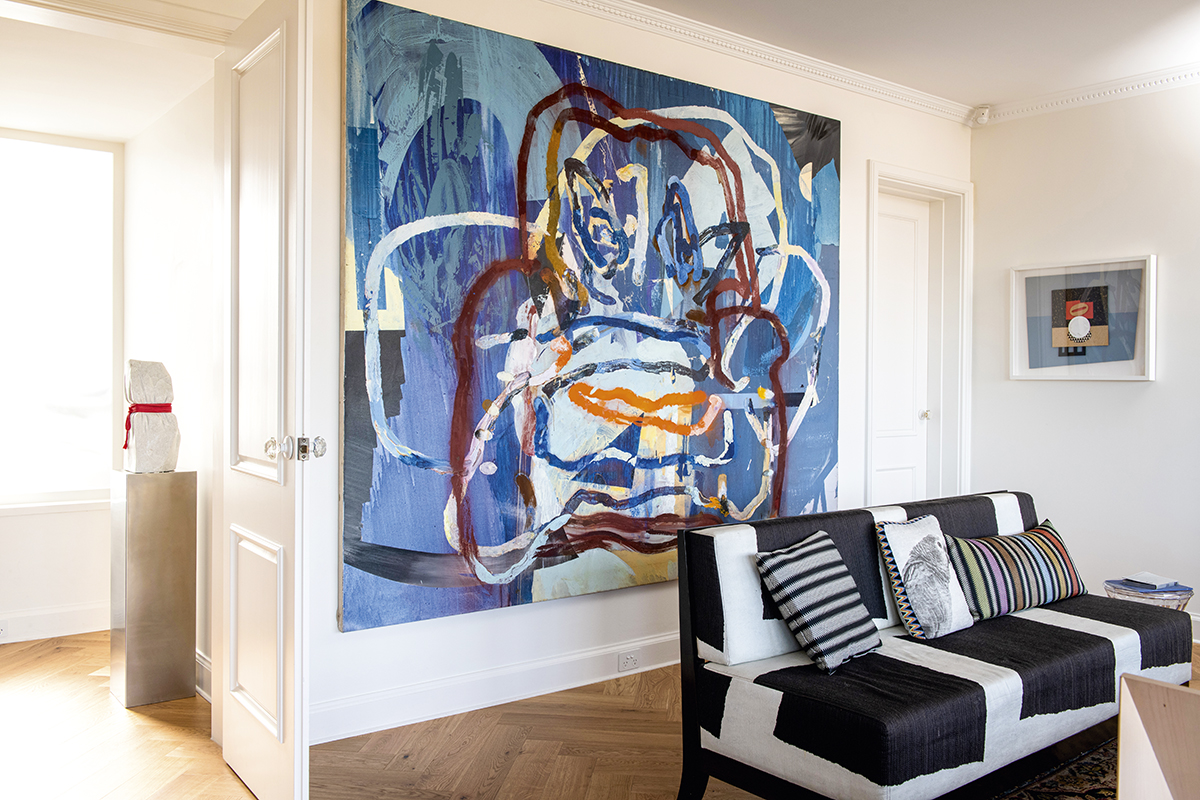
“It was a blank canvas on which he had painted a bowler hat and he had placed an actual hat hook into the frame so that the hook stood out as a three-dimensional aspect… I don’t have it any longer, but I thought it was just so out-there. It made me laugh.
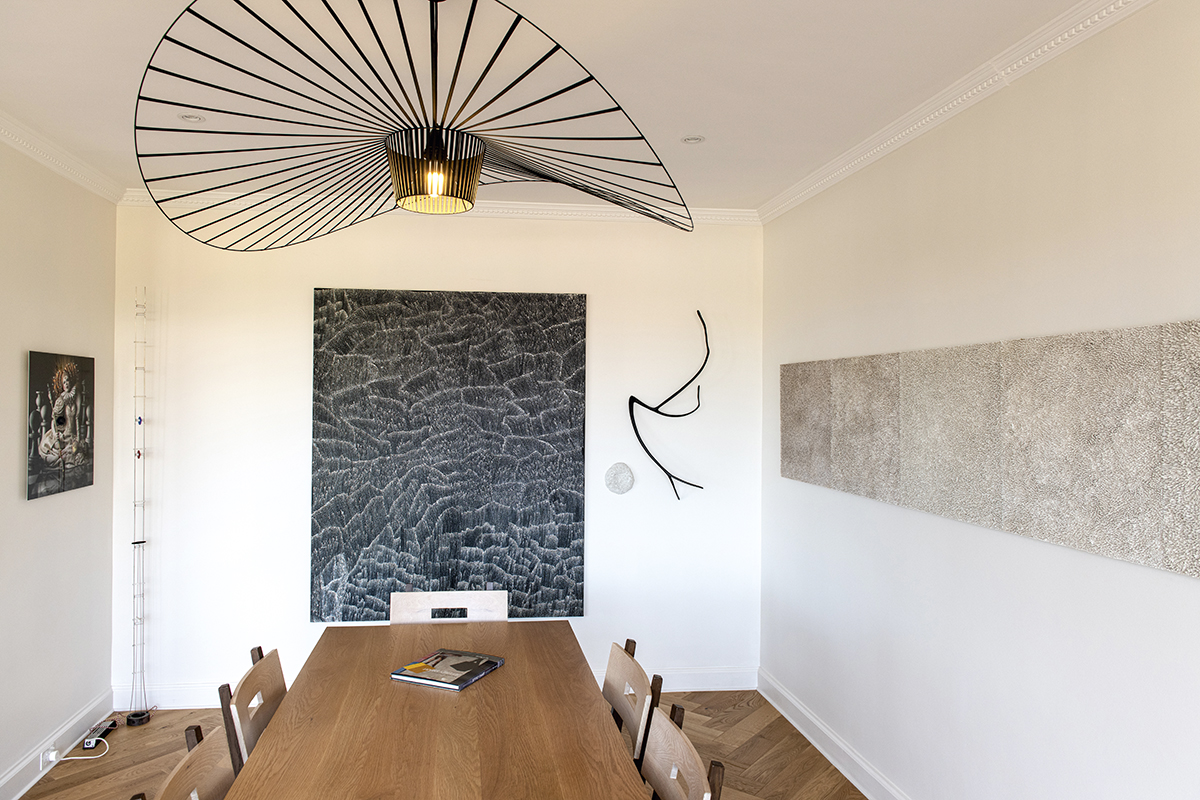
“It’s really what I think is important about art — it was rather beautiful and it was someone thinking differently. I felt engaged with it and people responded well to it.”
Early on, Diana had a keen interest in the work of what are known as émigré artists – Europeans who had settled in Australia from around 1930. Her collection still includes bronze and papier-mâché sculptures by Ieva Pocius and woodcuts by printmaker and painter Lidia Groblicka, who emigrated to South Australia from Lithuania and Poland respectively.
While her tastes have changed over the years, she says her purchases have always been instinctive and personal, rather than based on advice.
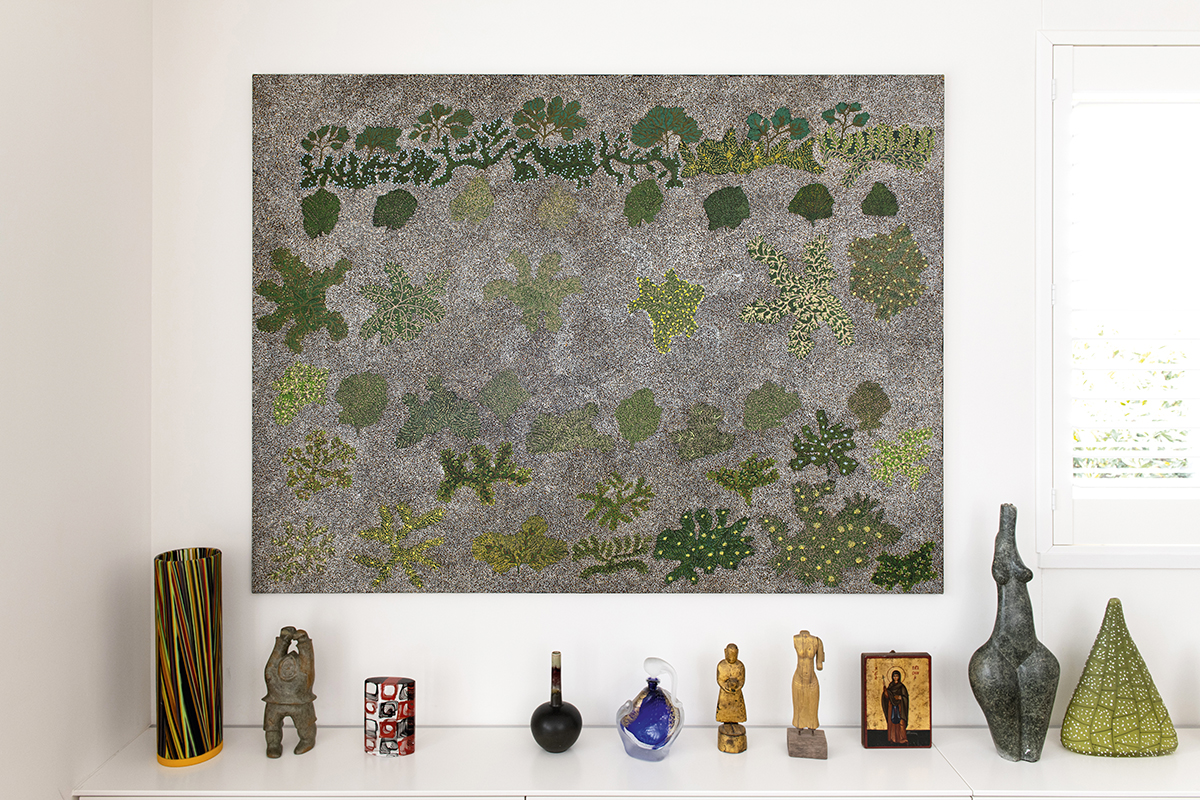
“I’ve always been attracted to work that is easy to live with and brings me joy, so it’s not always the most popular artists of the day and it’s certainly not those with the most investment potential.
“There’s no question that I’ve become bolder in the work I like but still I’ve never been drawn to work that is angry or has political messaging. I suppose I had enough of that in my actual life; I didn’t need it on my walls as well.”
Diana still owns two artworks that once graced her offices at Parliament House. One is a painting by WA artist Alan Marshall that shows soft light coming through an open window. When hung in the windowless basement room she occupied as a backbencher, it provided a breath of fresh air.
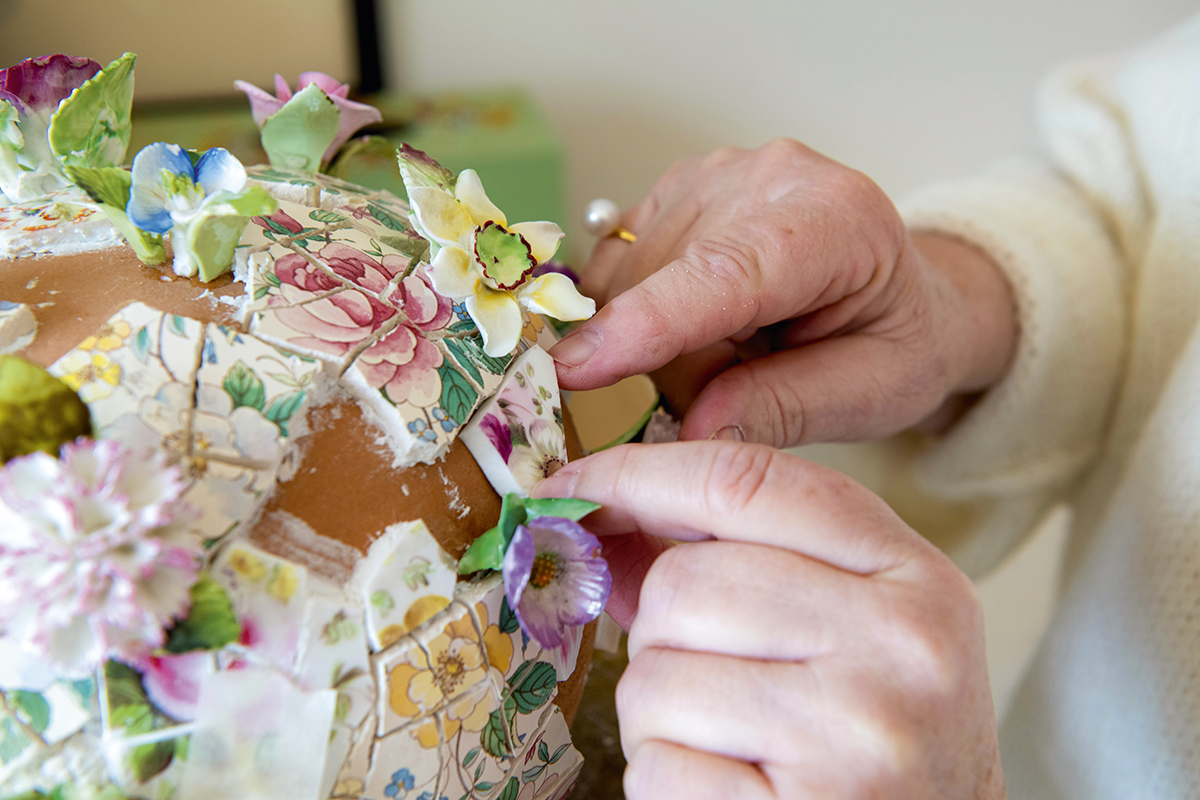
The other, a ceramic work of a girl with a skipping rope standing on a dog, is by South Australian ceramicist Liz Williams and bears a quote from JB Yeats: “Come away o human child to the waters and the wild with a faery hand in hand for the world’s more full of weeping than you can understand.”
“Liz came to my ministerial office very early on after I was appointed and she said she had a work in mind that she thought I would need in my office,” Diana says.
“She brought it in and I knew I would need to buy it. It was on my desk, then it went to my bedroom and now it’s at my desk here. It’s never left me.”
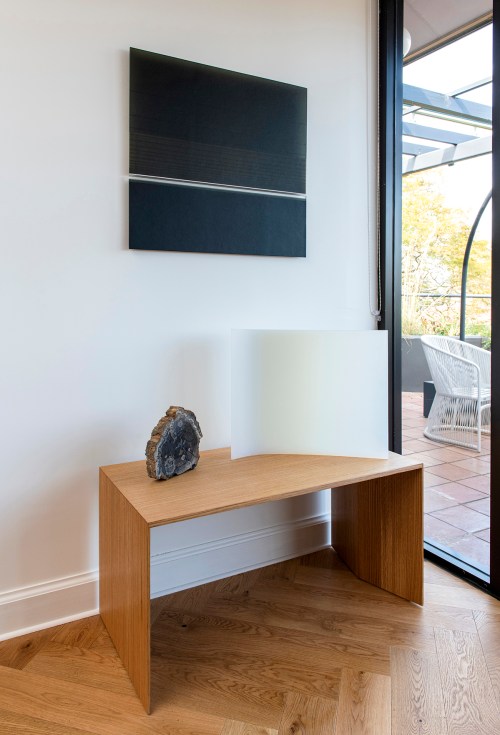
Diana found her own creative outlet through mosaics. Smashing ceramic tiles proved cathartic when she was dealing with the slings and arrows of the political world, and when she retired she found that refining her art practice offered the perfect transition from public to private life.
She had a studio in a converted shearing shed in the Barossa and showed her mosaic poles and other work in exhibitions over a number of years. She still makes mosaic sculptures in her home workroom, but sells them only on commission.
It was Diana’s interest in mosaics that led to the purchase of an intriguing work on her dining room wall that looks so tactile it’s almost impossible not to touch it. What appears to be squares of cream shag-pile carpet turns out to be a mosaic work created from limestone by an arts cooperative called CaC03 in Italy’s Ravenna.
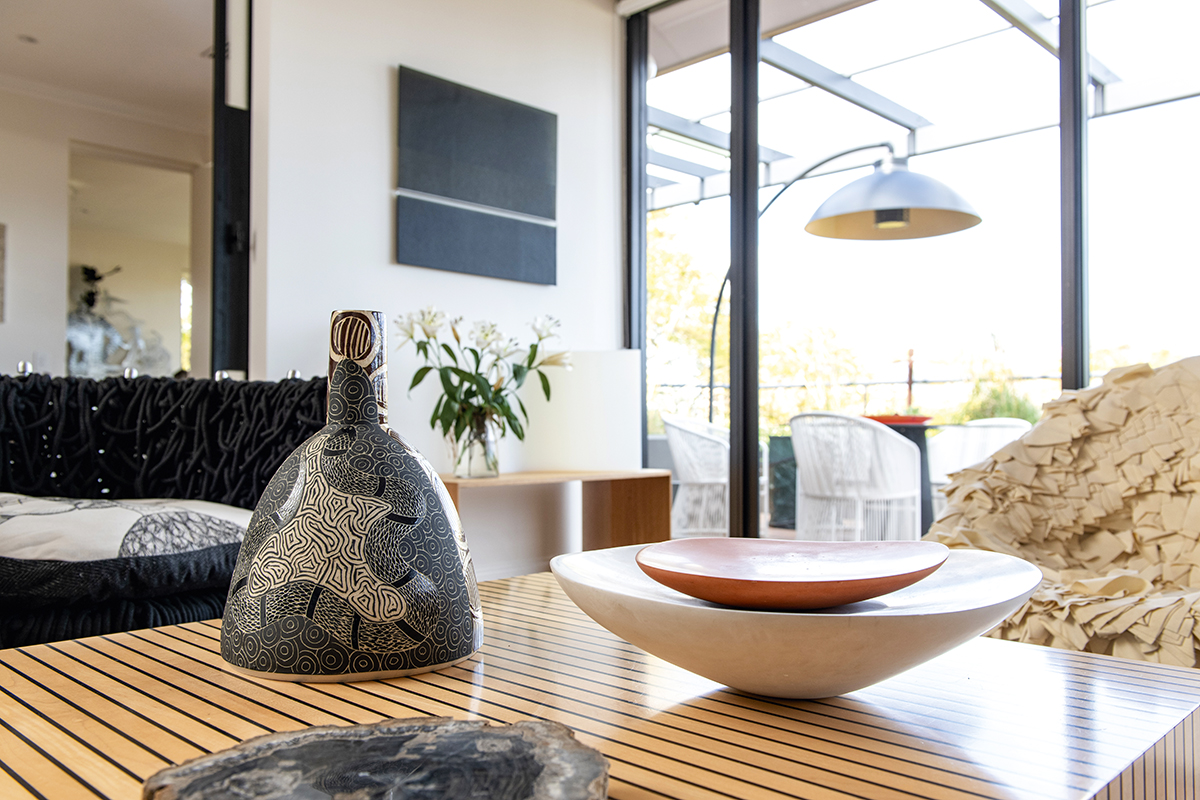
She encountered the young artists and the piece while attending a mosaic festival in the city four years ago.
“I was just absolutely overwhelmed when I saw it — I almost bought it on the spot.
“I got it shipped back and then my whole house had to be changed around it because I had so much bright colour before and then I got this piece and very little worked with it.”
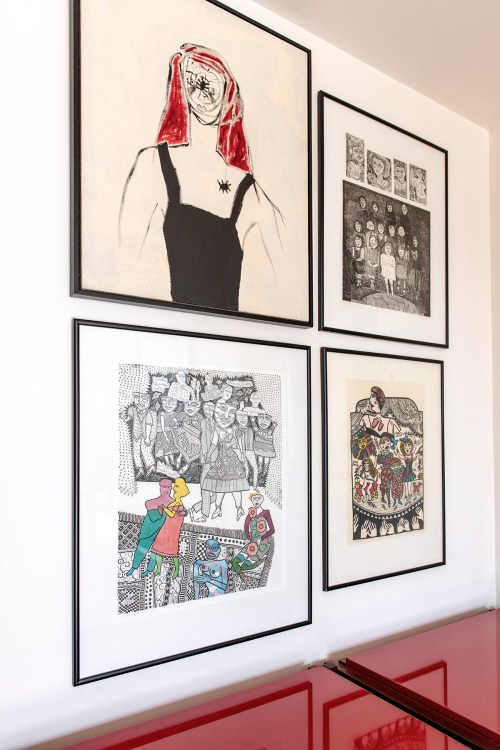
In a room anchored by a Khai Liew dining table and chairs, the mosaic piece is complemented perfectly by the works on an adjacent wall: a large grey-toned painting by Warlpiri / Luritja artist Lily Kelly Napangati of wind blowing across the top of sandhills, which Diana bought in the Northern Territory, and a bronze branch by South Australian sculptor Peter Syndicas.
Peter’s work was made to lie on the ground, but the artist put holes in the back so Diana could mount it on the wall, where it resembles a kind of stick insect in motion.
“It’s a benefit of buying from a South Australian artist, that you can get them to come and help you think about where to place the work and how to fit it on the wall and how it works with other pieces,” she says.
When Diana bought Jessica Loughlin’s work Receptor of Light V — the 2018 winner of the biennial FUSE Glass Prize presented by JamFactory — the SA glass artist visited her home with bespoke furniture designer and maker Andrew Bartlett. The piece now sits in a corner by the window on a small bench table Andrew created to complement it.
The visit also led to Diana’s latest art purchase for her new apartment: a piece of glass custom-made by Jessica that covers a window in the foyer, which previously offered an unappealing outlook.
“It’s like a slow-moving video screen — because of the light, it’s forever changing. It’s so beautiful.”
While she may have consolidated her personal art collection, it seems certain Diana will continue to add to it.
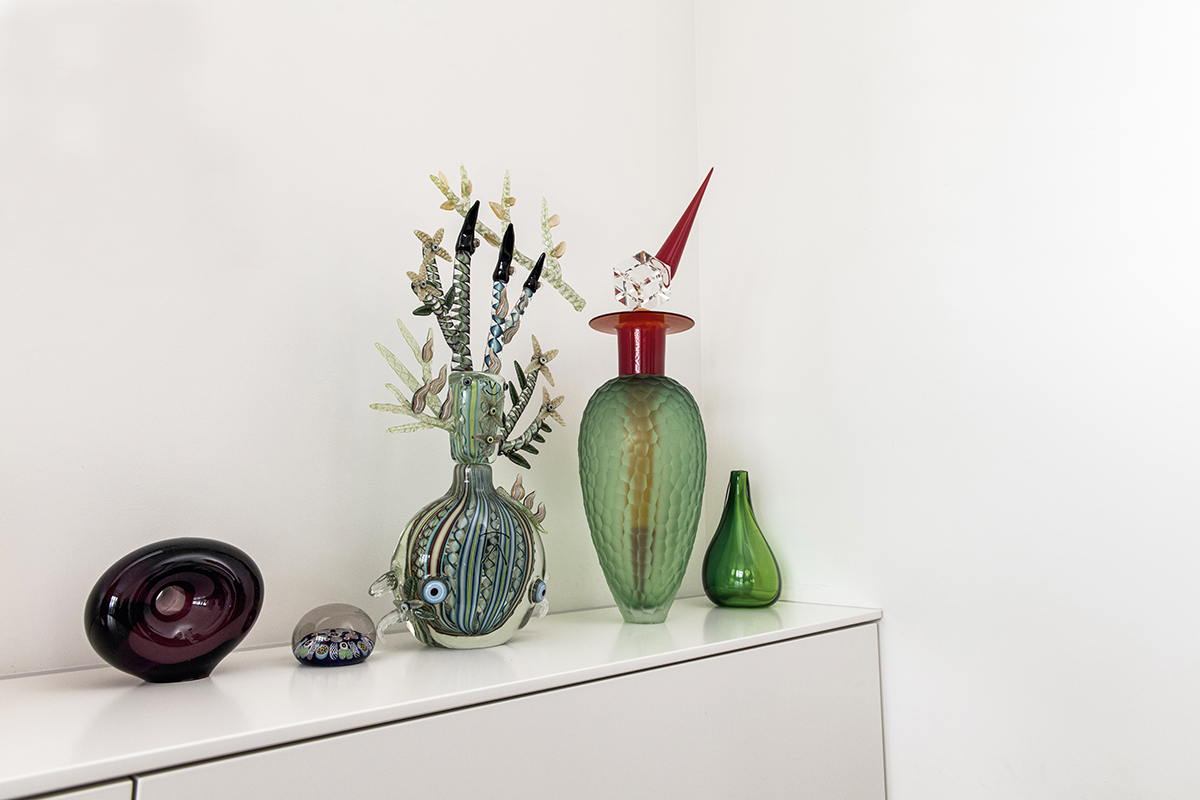
She still enjoys regularly visiting galleries and also supports the South Australian visual arts sector as a member of the Art Gallery of South Australia’s Contemporary Collectors, a founding donor of the FUSE Glass Prize, and a patron of both the Independent Arts Foundation and Guildhouse.
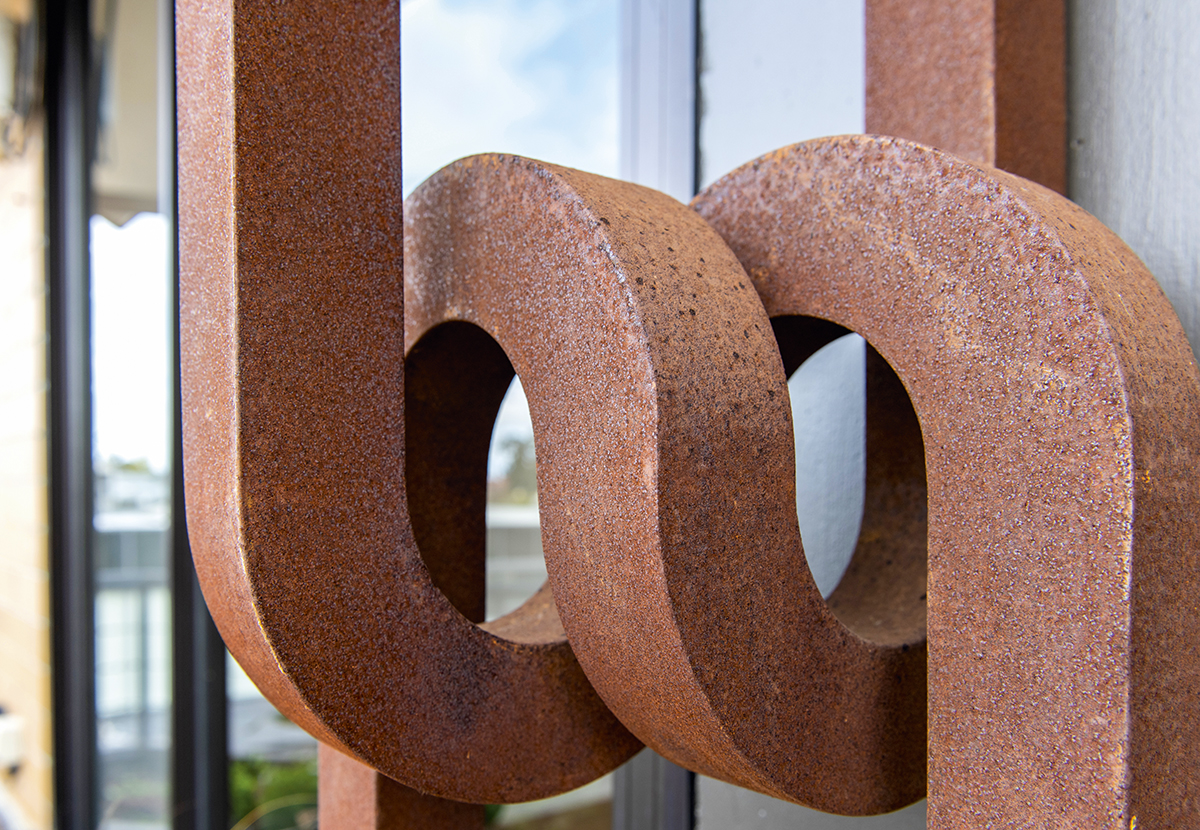
“We are so blessed in South Australia to have such extraordinary artists in every art form and they are still living in Adelaide,” she says.
“One of the privileges of my collecting is to have made respected and dear friends. I just love their vision and inventiveness and commitment.”
This story first appeared in the September 2020 issue of SALIFE magazine.



